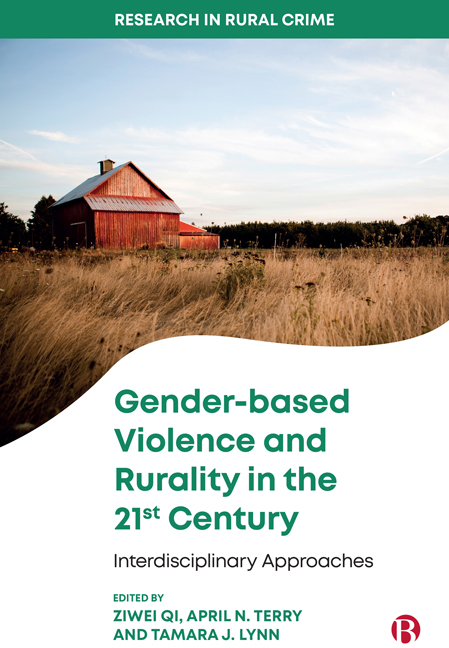Book contents
- Frontmatter
- Contents
- Series Preface
- List of Figures and Table
- List of Abbreviations
- Glossary
- Notes on Contributors
- Foreword
- 1 Understanding Rurality and Gender-based Violence
- PART I Rurality and Gender-based Violence
- PART II Beyond the Rural/Urban Divide: Critical Issues in Gender-based Violence
- PART III Access to Rural Justice: Economic Consequences and Policy Implications
- Index
13 - Gender-based Violence Against New Immigrants
Published online by Cambridge University Press: 20 January 2024
- Frontmatter
- Contents
- Series Preface
- List of Figures and Table
- List of Abbreviations
- Glossary
- Notes on Contributors
- Foreword
- 1 Understanding Rurality and Gender-based Violence
- PART I Rurality and Gender-based Violence
- PART II Beyond the Rural/Urban Divide: Critical Issues in Gender-based Violence
- PART III Access to Rural Justice: Economic Consequences and Policy Implications
- Index
Summary
Introduction
Victims of gender-based violence (GBV) who are non-citizens of the United States may seek lawful immigration statuses through legal pathways to escape abuses and receive services in the United States. Immigration/non-citizen status refers to a foreign-born individual's permission to lawfully reside in the United States. A non-citizen's status can be limited by the amount of time they are permitted to be in the United States, the type of work they are and are not allowed to engage in, who they are able to marry, and what activities (such as studying or caring for children) they are able to do while in the country. These rigid and often confusing constraints cause many immigrants in the United States to lose their lawful status either by violating the terms of their visa or by remaining in the United States for longer than the allocated time given to them upon entering the country.
Immigrant victims of GBV may have escaped violence in their home country and/or currently victimised in the United States. Those present in the United States without a lawful immigration status can experience uncertainty, instability and greater risk of revictimisation. Without a lawful status, a non-citizen is subject to being detained and/or deported from the United States. Fear of losing legal status and deportation often prevents GBV victims from seeking outside help (Chang-Muy et al, 2016). Perpetrators of violence frequently use immigration status as a vulnerability to exploit (Orloff and Sullivan, 2013). To understand why immigration status carries such weight, one needs to examine lawful immigration status and the general pathways to obtain such a status in the United States. First, the chapter provides three common legal pathways to gain lawful status in the United States. This chapter discusses both victims of GBV who reside in and outside of the United States and pathways to obtain lawful residency. Yet, we will primarily address the victims of GBV who reside in the United States. Next, policy limitations, barriers to access services and future policy reforms will be discussed to address the needs of immigrant victims and their families.
- Type
- Chapter
- Information
- Gender-based Violence and Rurality in the Twenty-first CenturyInterdisciplinary Approaches, pp. 198 - 211Publisher: Bristol University PressPrint publication year: 2023

